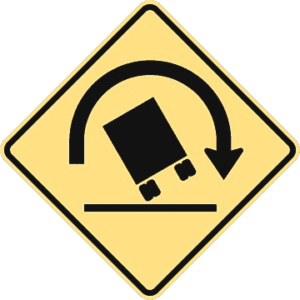
Quality Control vs. Production Testing: Understanding the Differences
BlogIn the intricate world of manufacturing, ensuring the quality of products is a top priority. Two key processes that play pivotal roles in achieving this goal are Quality Control (QC) and Production Testing. While these terms are often used interchangeably, they represent distinct approaches to maintaining product quality. In this article, we will explore the differences between Quality Control and Production Testing, shedding light on their unique roles and how they contribute to the overall quality assurance process in manufacturing.
Quality Control (QC):
Quality Control is a systematic process implemented to ensure that products meet specified quality standards and requirements. It is a comprehensive approach that involves inspecting, testing, and evaluating products at various stages of the manufacturing process. The primary objectives of Quality Control include identifying defects, deviations from standards, and inconsistencies in product characteristics.
Key Aspects of Quality Control:
- Inspection and Sampling: QC involves inspecting a representative sample of products to assess their conformity to quality standards. This may include visual inspections, measurements, and other evaluations.
- Process Monitoring: Quality Control extends beyond inspecting final products. It also involves monitoring and controlling manufacturing processes to prevent defects from occurring in the first place. This proactive approach minimizes the likelihood of defects in the end product.
- Human Intervention: QC often requires human intervention in the form of skilled inspectors and quality assurance professionals. Their expertise is crucial in identifying nuanced defects and ensuring that products meet the desired quality criteria.

Production Testing:
Production Testing, on the other hand, is a specific subset of quality assurance that focuses on evaluating the functionality, performance, and reliability of products. Unlike Quality Control, which encompasses a broader set of activities, Production Testing is more targeted and is specifically geared towards validating that products meet predefined specifications.
Key Aspects of Production Testing:
- Functional Testing: Production Testing involves subjecting products to a series of tests that assess their functionality. This may include testing electronic components, software functionality, mechanical parts, or any other aspect relevant to the product’s intended use.
- Batch or Lot Testing: In some cases, especially in high-volume production, testing is conducted on a sample basis from a batch or lot. This approach provides an efficient way to ensure that a representative portion of products meets the required standards.
- Automation: Production Testing often leverages automated systems to conduct tests efficiently and accurately. Automated testing ensures consistency and repeatability in the testing process, minimizing the impact of human variability.
Understanding the Differences:
While both Quality Control and Production Testing share the overarching goal of ensuring product quality, their approaches, focus areas, and timing in the manufacturing process set them apart.
- Scope and Timing: Quality Control spans the entire manufacturing process, from raw materials to finished products. It is applied at various stages, including incoming materials inspection, in-process inspection, and final product inspection. Production Testing, on the other hand, typically occurs at the final stages of production when products are fully assembled and representative samples can be tested.
- Focus and Objectives: Quality Control focuses on identifying defects, ensuring consistency, and preventing deviations from standards throughout the production process. It is a holistic approach that involves human judgment and continuous process monitoring. Production Testing, conversely, concentrates on assessing the functional aspects of products to validate their performance against predefined criteria.
- Human Involvement: Quality Control often requires a higher degree of human involvement, expertise, and visual inspection. Skilled inspectors play a crucial role in identifying subtle defects and ensuring that products meet quality standards. Production Testing, especially when automated, relies more on technological systems and equipment to conduct precise and repeatable tests. The benefits of implementing automated testing, read more in our article.

Linking to Standards:
Both Quality Control and Production Testing benefit significantly from adherence to industry standards. Standards provide guidelines, specifications, and benchmarks that help manufacturers define quality criteria and ensure consistency in their processes. For more information on standards in Canada, you can refer to authoritative sources such as Wikipedia.
Conclusion: A Holistic Approach to Quality Assurance
In the dynamic landscape of manufacturing, Quality Control and Production Testing are complementary elements of a robust quality assurance framework. While Quality Control addresses the overall quality of products throughout the production process, Production Testing hones in on the specific functionality and performance aspects. Understanding the differences between these two processes is crucial for manufacturers aiming to implement a comprehensive and effective quality assurance strategy.
By integrating both Quality Control and Production Testing into their processes, manufacturers can achieve a holistic approach to quality assurance. This ensures that products not only meet established standards but also perform optimally in real-world applications, ultimately contributing to customer satisfaction and the success of the manufacturing enterprise.
Recent Posts
- The Role of Data Analytics in Optimizing Production Testing Processes
- Measuring Success: Key Performance Indicators for Production Testing
- The Interplay Between Production Testing and Continuous Improvement
- The Importance of Training and Skill Development in Production Testing Teams
- Strategies for Minimizing Downtime During Production Testing

